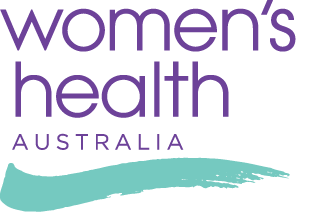
EMBARGOED UNTIL 10:30PM TUESDAY 30 AUGUST 2022
New research reveals that the prevalence of sexual violence against women in Australia is much higher than previously considered. Findings from a new ANROWS project led by researchers from the University of Newcastle, A life course approach to determining the prevalence and impact of sexual violence in Australia: Findings from the Australian Longitudinal Study on Women’s Health, demonstrate the far-reaching impacts of sexual violence on women’s lives, especially on their finances, health and wellbeing.
Using data from the Australian Longitudinal Study on Women’s Health (ALSWH), researchers established new prevalence rates for sexual violence against women in three age groups. They found 51 per cent of women in their twenties, 34 per cent of women in their forties and 26 per cent of women aged 68 to 73 have experienced sexual violence.
The study also revealed more about the long-term impacts of sexual violence across a woman’s life. Victims and survivors of sexual violence are between 30 and 45 per cent more likely to have high levels of financial stress and also report worse physical and mental health, including chronic conditions and mental health issues.
The study also found that women in their twenties and forties who experienced childhood sexual violence are twice as likely to have experienced sexual violence, domestic violence and physical violence as an adult.
The Hon Amanda Rishworth MP, Minister for Social Services, described the rates of women experiencing sexual violence and the long-term impacts of their abuse as concerning.
“This research is so important to highlight this scourge which not only impacts victim-survivors in the short term, but also in a variety of ways over the long term.”
ANROWS CEO Padma Raman PSM further highlighted the significance of this study as Australia’s first to use longitudinal data to map the prevalence and impacts of sexual violence across a woman’s life.
“This study is an example of women providing researchers access to information about their experiences in the hope that that data will inform urgent and practical change. This research creates that opportunity by emphasising the need for policymakers to see sexual violence as a health risk and effectively build responses that attend to the possibility of future harm – especially re-victimisation.”
The researchers also pointed out the need for a nationally consistent definition of sexual violence. Relying on data collected at a single point in time or using inconsistent and often narrow definitions means the true prevalence and cumulative impact of sexual violence go unseen.
Ms Raman highlighted that the research, while damning, does point to opportunities to strengthen public responses to women who experience sexual violence.
“The evidence is shocking, but it also shows that women connected to accessible healthcare services and strong social support experience better quality of life after sexual violence. We need to hear that message and really invest in what works for women’s long-term recovery.”
Professor Deborah Loxton, a senior author on the report, seconded Ms Raman’s comments and emphasised the need for women to have access to a network of both formal and informal supports.
“Our findings show that social supports can really make a difference to buffering the trauma of sexual violence. With that in mind, we need to make sure that at all levels – in policy, practice and in the community – we are thinking about how to promote connectedness and to keep women feeling supported and linked to family or friends, as well as making sure appropriate mental and medical health services are accessible to all who need them.”
Peta Forder, a senior analyst on the study, stressed the significance of the study in challenging some often-held assumptions, saying, “This study disrupts some serious misconceptions about sexual violence. This research shows that sexual violence isn’t a rarity that largely happens to young women. Unfortunately, it’s all too common. It happens across a woman’s lifetime and sometimes starts young, in childhood. The findings connecting sexual violence in childhood to re-victimisation in adulthood need to be taken especially seriously.”
Minister Rishworth said, “We know family, domestic and sexual violence against women and children in Australia is at epidemic proportions and the Albanese Labor Government is committed to acting on this.”
“Along with my state and territory counterparts, I’m committed to releasing the next National Plan to End Violence against Women and Children by October. This Plan will be important to turning these figures around.”
“I thank ANROWS for their important work in this space.”
Journalists are invited to request an embargoed copy of the report and infographic resource.
Journalists are also strongly encouraged to use a content warning in their publications, such as the following:
Parts of this content may be confronting or distressing. If you require support, ANROWS recommends reaching out to specialist services including 1800RESPECT (1800 737 732), Lifeline (13 11 14) and, for Aboriginal and Torres Strait Islander people, 13YARN (13 92 76).
For further information, contact Johanna Gleeson at ANROWS on +61 0426 529 959 or email johanna.gleeson@anrows.org.au
About ANROWS
Australia’s National Research Organisation for Women’s Safety Limited (ANROWS) is a not-for-profit independent national research organisation.
ANROWS is an initiative of Australia’s National Plan to Reduce Violence against Women and their Children 2010–2022. ANROWS was established by the Commonwealth and all state and territory governments of Australia to produce, disseminate and assist in applying evidence for policy and practice addressing violence against women and their children.
ANROWS is the only such research organisation in Australia.
About this research project
The research on which this media release is based was conducted as part of the Australian Longitudinal Study on Women’s Health by the University of Queensland and the University of Newcastle. The research team are grateful to the Australian Government Department of Health and Aged Care for funding and to the women who provided the survey data. Data linkages were done by the Australian Longitudinal Study on Women’s Health (also known as Women’s Health Australia).

